How much easier life would be if your electricity source, coolers, geysers, and heaters came packed in one box. A team of researchers from the University of Newcastle and Infratech Industries, an Australian company have envisioned a fridge sized box of the sort that will deal with all your energy needs, generating it and storing it for use as and when required.
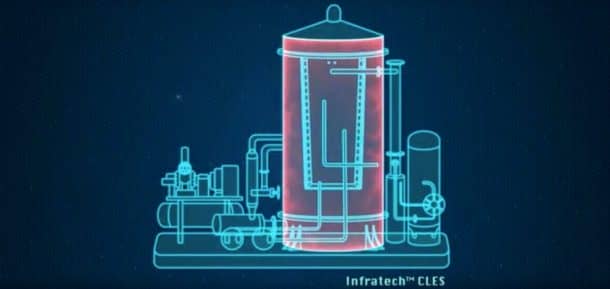
Source: University of Newcastle
Professor Behdad Moghtaderi is the University of Newcastle is the man behind the invention that has been named Chemical Looping energy-on-demand System (CLES). Infratech has been involved in the project ever since the beginning, both in the technical development and the commercialization plans for the product. The team established an industrial scale reference plant in Newcastle, Australia, this April. It was designed for building the size of a hospital, to supply electricity and provide heating, cooling, and hot water. It also produces oxygen and hydrogen that can be used immediately or stored for selling.
CLES is essentially a combination of a generator and a battery that uses natural gas to generate electricity and takes electric energy from a renewable source or the grid and stores it in the battery. The system is based on a reduction-oxidation (redox) reaction that uses a canister of a special particle mixture that loses and gains electrons in a cycle. When the particles gain electrons, they heat up, thus creating steam to drive the turbine for electricity generation. When the particles reduce again, oxygen is released that can be collected and used. As Professor Moghtaderi explains, “Reduction is an endothermic process, so you basically consume energy to get it done, whereas oxidation is an exothermic process, you actually produce a lot of heat from the reaction. So by managing this cycle, we provide energy to the reduction step using an energy source, which could be natural gas, could be off-peak electricity, or could be electricity from renewables like solar or wind.”
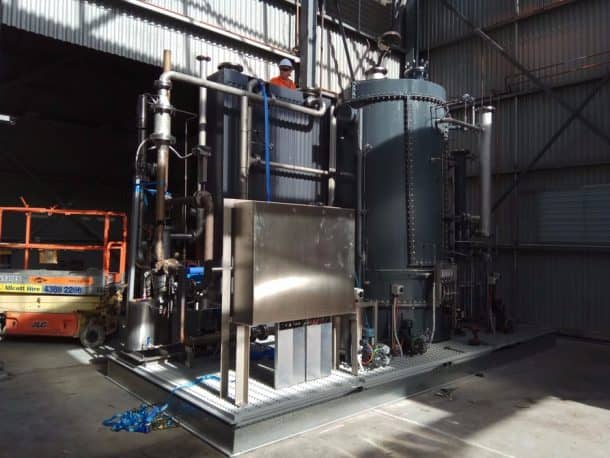
Source: University of Newcastle
The excess heat produced by CLES can be directly used for heating a building, or to get hot water and even be used for cooling using a separate attachment. The process can be altered a little to obtain hydrogen that can be collected.
The particle mix inside the canister uses naturally occurring materials that are readily available, and the team says they purchase those for under AUD150 (US$ 112) for a ton. The composition of these materials is IP protected, but the system only uses a small amount at a time that can be packed in a cartridge to run multiple times. Cartridge changes will be a bit of a problem, but each cartridge is expected to last at least six months to two years. The prices for the cartridge will be reasonable as the team says.
The system runs either in the energy storage mode or the Energy-on-demand mode. In the energy storage mode, the system acts like a massive battery that can be fed by the grid or renewable sources to be stored for later. You can use the energy of the day during the night, and if you ever get stuck in a power outage, this will be your ultimate savior. The CEO Infratech, Rajesh Nellore explains, “You could operate it like a typical energy storage system, which means during off-peak hours it would charge the particles, and the particles would discharge during the peak hours. So you get all the products, including electricity, oxygen, hot water, heating, cooling, during the day. It’s the same principle as when you have solar power and a battery.”
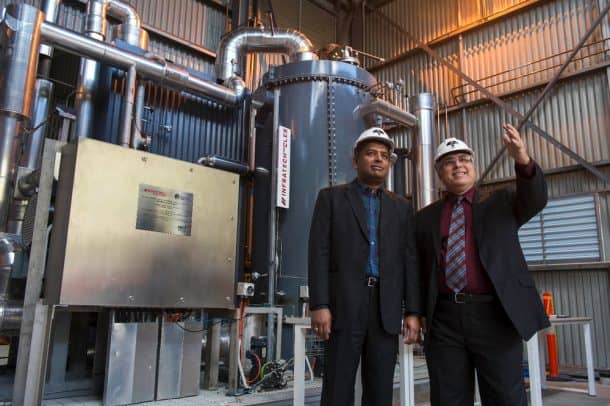
Source: University of Newcastle
In the energy-on-demand mode, the system will be supplied by natural gas to keep the redox reaction go on, enough to generate electricity for providing the heating, cooling and power needs of the building. The system reduces the reliability on the grid and shifts it to natural gas which more reliable, produces lesser emissions, and is also cheaper. Moghtaderi says, “In distributed power generation, rather than having a massive centralized grid, you’re talking about much smaller microgrids. This system, in the Energy on Demand mode, has been designed for a micro-grid application. So essentially, if you deploy to a retirement village, and you hook it up to natural gas, that retirement village would be entirely independent of the national electricity network, and they can produce their own power and other utilities, 24/7.”
The system has an efficiency of 45 percent in the energy-on-demand mode, which is comparable to the efficiency ratings of industrial gas turbines. This efficiency is only in terms of the electricity it generates, but if you take into consideration the reclaimed heat and the produced oxygen and hydrogen, the number jumps to about 90 percent.
The team plans to downscale the entire device for use in smaller buildings such as houses. The system generally produces oxygen as a by-product that can be used on site if the system is installed in a hospital or a retirement village. In the case of a residential system, the team has designed a special unit to pressurize and store the 120kg of oxygen that the system produces every day. As of hydrogen, it is not a safe idea to generate and store such a flammable element in houses, “Oxygen is a by-product, and it’s a very valuable commodity. But hydrogen would never be permissible in a residential or commercial environment. So it’s only when you have fuel cell cars that need hydrogen, and you’re trying to create a hydrogen infrastructure, then it would make a lot of sense to actually focus on the hydrogen by-product,” says Nellore.
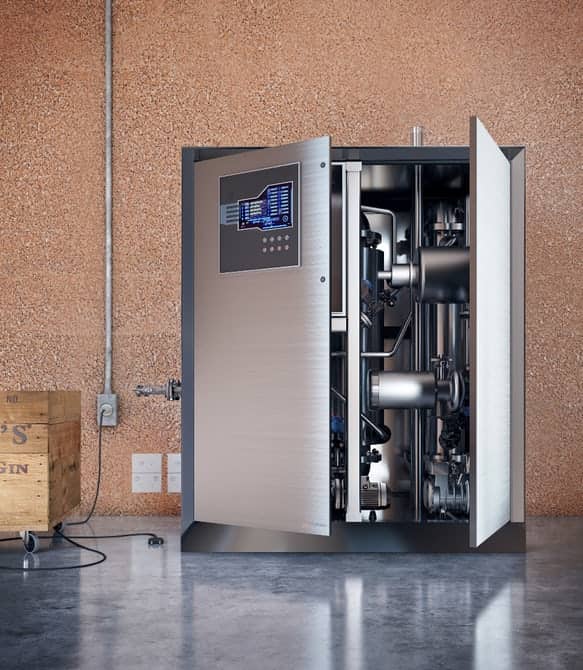
Source: University of Newcastle
The Newcastle team and Infratech are planning to release the system soon, beginning with a demonstration in a dental hospital in Sydney in July or August. If the system works as promised, the same scale versions will be installed in other facilities by the end of this year. As far as residential systems are concerned, those are not expected for at least another 18 months. Whenever that happens, it is sure to revolutionize the energy systems of our homes. “Let’s say you come home, you hook up your laptop and mobile phones to charge using your own power. At the same time, you recharge your hydrogen fuel cell car for the next day using the hydrogen that you yourself are generating. Meanwhile, you can inject some of the oxygen that you produce into the house and improve the freshness of the air, or alternatively, you could just store it and sell it,” says Moghtaderi.
Watch how the system works in the video below:

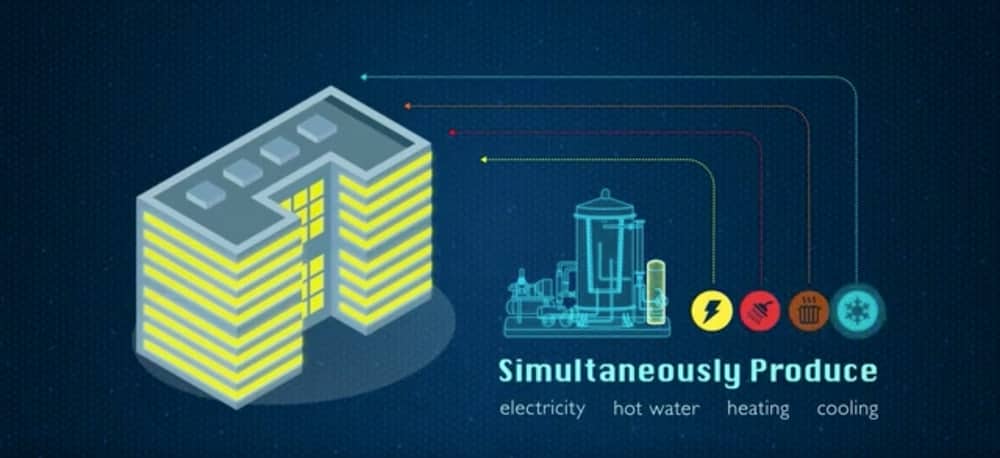

The author writes that hydrogen would never be permitted in residential areas, but then why is propane allowed? Hydrogen is safer than propane.